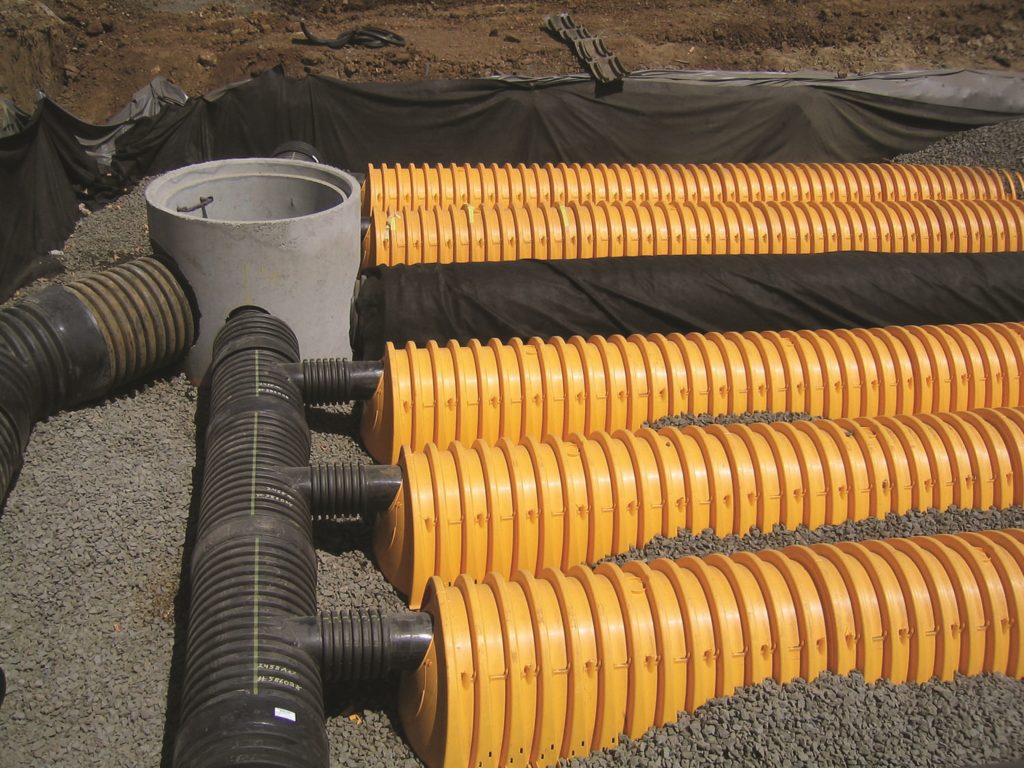Francisco Street reservoir was the first large reservoir in San Francisco, California when originally built in 1859. Decommissioned in the 1950s, the site was to be redeveloped but the Francisco Park Conservancy fought to keep it as a natural resource that would include harvesting rainwater. Underneath the 1.8 hectares Francisco Park is a stormwater capture and reuse system which was installed in 2021 to perpetually provide water for the park’s irrigation and toilets.

How the stormwater system works
The stormwater is stored in a 1.9M litre cistern at the top of the hill before being transferred to the service building, where it flows through a series of filtration and disinfecting processes. This ensures that the water meets public health regulations, while saving 5.7M litres of potable water every year.
The engineers decided to use a system of arched chambers because they would provide the largest storage volume per square metre.
“The reservoir is on a slope that is just under 20%. It’s a very challenging site from a variety of perspectives,” explains Sherwood Design Engineers (San Francisco) principal Cody Anderson who is responsible for the stormwater system.
“Normally you’d have your catch basin at the bottom of the site. Here, the historic reservoir is midway up the slope, so half the runoff is collected via gravity flow and the rest collected at the bottom of the site and pumped. All captured runoff flows through the screening filtration and into the chambers for storage and later use.”
Equipment used
Three hundred and seventy two ADS StormTech chambers, were installed using a 35m by 45m area of the existing reservoir and then covered with soil. This gave a total storage capacity of 2,000m3 of water in a 1,682m2 footprint. ADS StormTech chambers provided the best ratio of storage volume to footprint area.
The StormTech chambers are independently tested, BBA-approved and fully compliant with ASTM F2787, F2418 and F2922 stormwater storage systems standards. StormTech is typically used for below ground SuDS attenuation projects and more than 2.5M chambers have been used successfully around the world in over 40,000 projects. Three StormTech Isolator Rows are included in the Francisco Street reservoir system. These patented water quality treatment devices are integral to the StormTech system. They capture the “first flush” and trap sediment and other pollutants coming from stormwater runoff.
StormTech chambers come in a wide range of sizes, making them easy to install for all conditions. They are highly adaptable and can be configured around obstacles as well as affording multiple inlet and outlet positions. Standard pipe manifolds, manhole and access chamber inlet/outlet structures and flow controls can be used.

Reclaiming an area of San Francisco
“There are competing products on the market,” says Anderson. “We needed to store as much water as possible in the given area. We work on projects around the globe with an emphasis on sustainable development and we’re known for having the vision and the technical capacity.
“The Francisco Park is one of those projects of a lifetime. It’s reclaiming an area in the city of San Francisco that is now a beautiful park for the people.”
For more information on Advanced Drainage Systems, visit www.adspipe.co.uk.